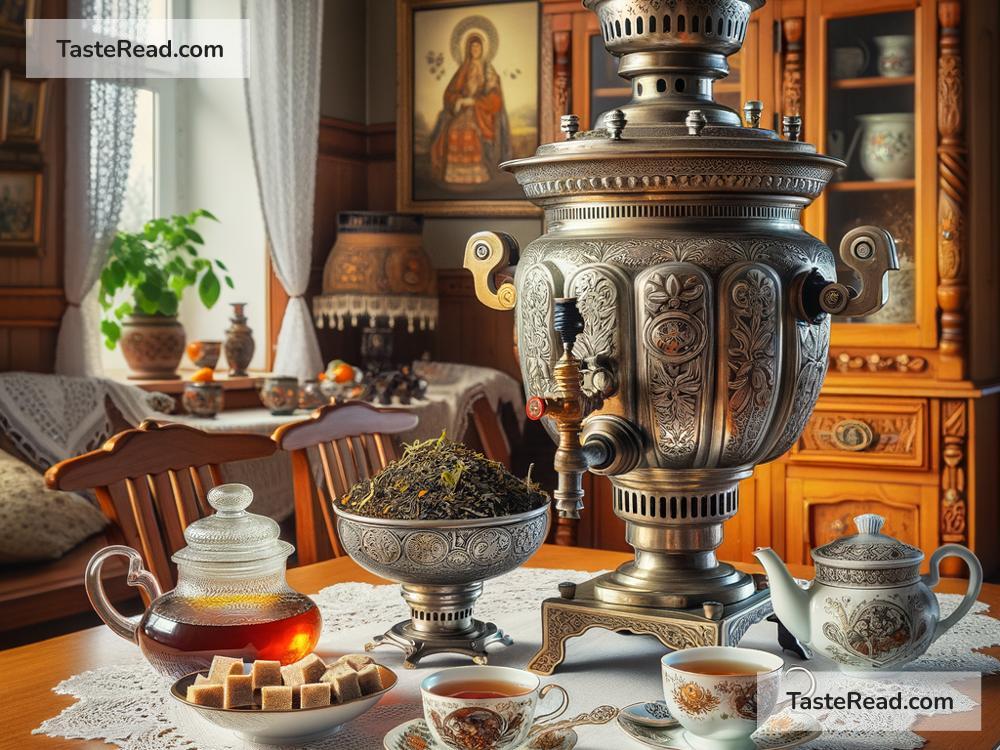The Cultural Significance of the Russian Samovar
For centuries, the samovar has been more than just a tool to heat water; it has been a symbol of Russian hospitality, tradition, and social connection. This iconic device, known for its unique design and practical function, holds a special place in Russian culture. It represents a bridge between the past and present, continuing to play a role in family gatherings and community life. In this blog, we’ll explore the history, symbolism, and cultural significance of the samovar in Russia.
What Is a Samovar?
A samovar is a traditional device used for heating water, primarily for making tea. It consists of a large, often ornate, metal container with a spout at the bottom. Inside, there’s usually a pipe or chamber designed for burning charcoal or wood to heat the water. Modern versions may use electricity instead of fire.
Samovars originated in Russia in the 18th century, though similar designs can be found in other cultures, such as Persia (now Iran). In Russia, however, the samovar became a beloved household item, tied closely to the art of tea-drinking and cultural rituals.
The History of the Samovar
The exact origins of the samovar are unclear, but it’s believed they emerged in Russia during the early to mid-1700s. The town of Tula, south of Moscow, became famous for producing high-quality samovars. Tula’s skilled metalworkers made samovars in various sizes and designs, some simple and functional, while others were ornate works of art.
By the 19th century, samovars had become an integral part of Russian life. They were found in homes, inns, and train stations, where they served as a source of hot tea and a gathering point for conversation. Owning a samovar was seen as a mark of prosperity, and wealthier families often commissioned custom samovars decorated with intricate patterns, engravings, and gold or silver plating.
During the Soviet era, samovar production continued, but the designs became more industrial and less decorative. As electrical appliances became popular, traditional samovars were gradually replaced by electric kettles. However, the samovar never disappeared entirely. Today, it’s viewed as a cultural artifact and is still used by many families who appreciate its charm and functionality.
Symbolism of the Samovar
The samovar is more than just a practical tool; it represents warmth, care, and connection. In Russian culture, tea-drinking is a communal activity, and the samovar embodies the spirit of togetherness. Families and friends gather around the samovar for conversation, laughter, and sharing stories, whether it’s at home or during holiday celebrations.
Hospitality is deeply rooted in Russian traditions, and offering tea from a samovar is considered an act of kindness and respect. The samovar symbolizes the host’s desire to make guests feel welcome and comfortable.
Additionally, the samovar reflects the Russian love for tea. While tea originated in China, it became immensely popular in Russia after being introduced in the 17th century. Over time, Russians developed their own tea-drinking customs and rituals, many of which involve the samovar. Pairing tea with jam, honey, or lemon is still a beloved tradition, and the samovar remains central to this experience.
The Samovar in Literature and Art
The samovar has been a recurring image in Russian literature and art, symbolizing family life, harmony, and simplicity. Writers like Anton Chekhov and Leo Tolstoy often depicted scenes of people gathered around a samovar, enjoying tea and discussing life’s challenges and joys.
In Russian folk art, samovars are sometimes painted or embroidered as decorative motifs. They are associated with Russia’s rich cultural heritage and traditional way of life. The samovar has also inspired countless poets, painters, and designers to celebrate its beauty and significance.
Modern-Day Role of the Samovar
Though modern technology has made boiling water quicker and more convenient, the samovar has not lost its charm. Many Russian families still own samovars, whether traditional or electric, and bring them out for special occasions. In rural areas, traditional coal-burning samovars are sometimes preferred for their nostalgic appeal.
The samovar has also gained popularity among tourists and collectors. Travelers to Russia often buy samovars as souvenirs or gifts, drawn to their historical and cultural significance. Some samovars are considered antiques and can be quite valuable.
Beyond Russia, the samovar has influenced tea-drinking traditions in neighboring countries, including Ukraine, Iran, and Turkey. Its legacy continues to spread as people from various cultures embrace its symbolism of hospitality and connection.
Conclusion
The Russian samovar is far more than a water-heating device; it is a reflection of history, tradition, and community values. For centuries, the samovar has brought people together, fostering moments of connection and offering warmth both literally and figuratively. Although times have changed, the samovar remains a beloved cultural artifact that continues to inspire nostalgia, creativity, and appreciation for Russian heritage.
Whether you see a samovar in a museum, in someone’s home, or on the pages of a Russian novel, know that it carries with it a story of shared moments and timeless traditions. The samovar reminds us of the simple joys of sitting down with loved ones, sipping tea, and cherishing the gift of togetherness.


